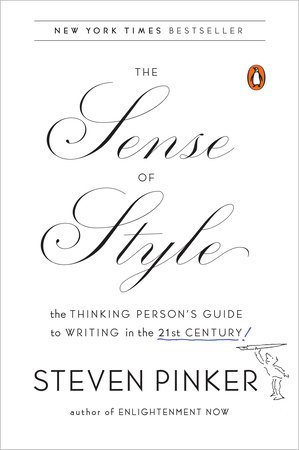This year, for me, was a tale in two parts:

I started the year enamored with the video game Hitman. I wrapped up the game around May and started focusing on building my game The Ump Show. I had hit a roadblock with my game and Hitman gave me a nice satisfying break.
The green bar in the first graph is Hitman 2 and the pink bar is Hitman 3. I put in roughly 50 hours in each game. Like many big-budget games, Hitman has beautiful and detailed environments but the stealth mechanics of the game force you to slow down and that allows you to absorb those details. I love how the game manages to make different locations feel different. They managed to capture the vibe of different cities and I loved it.
The Ump Show

As I wrapped up Hitman though, I started thinking more about the umpire game I had started last year. I had put it away after implementing the basic mechanics of calling balls and strikes. The problem was that I wasn’t sure how to make the game fun. I knew calling balls and strikes was satisfying but the game needed a constraint and a larger goal.
I had some trouble finding the right solution. But taking this gaming break helped. Around mid-May, I came up with the idea of a cheating umpire. As the umpire, you want to make correct calls to avoid losing the game. But you also want to occasionally cheat so that your preferred team wins. The balance between these goals provided structure to the larger experience and also thematically fit the tone of the game.
I had a playable version of the game by July. I published the game on itch.io and shared it on reddit. When I published the game, I hoped to have 200 people play it. Thanks to the baseball subreddit 30,000 people played the game that weekend.
Since then I have made numerous updates to the game, created a Steam page and a website, and made a bunch of videos to promote the game.
The hope is to add more mechanics to the core loop, add a story mode, and have a Steam release in 2024.
Writing
After writing the Degenerate Matter post last year, I was motivated to write more this year. Thankfully, my friend Danny Guo had the same idea so we started a writing club. Just having a monthly meeting gave us a schedule and allowed us to write a lot more.
Overall, the theme of my writing has been to explain things: things that I found fascinating and I wanted to share.
My personal favorites from this year:
- Why is Mars's Moon Traveling the Wrong Way?
- π in Other Universes
- Intuition for Cryptography
- Boundaries of Predictability
- Infinite Systems Failing in a Finite World
π in Other Universes was by far the most popular post this year. What Is a URL and Intuition for Cryptography probably are the next most popular.
Reading
My book count continues to drop. Partly because I was able to manage my curiosity just with articles for most of the year and partly because I was spending a lot more time working on The Ump Show.
Books

As I decided to write more, I decided to read two books on writing. On Writing Well is a classic on writing nonfiction. Unfortunately, the book tends to prescribe tips without explaining the motivation. The Sense of Style does a much better job of providing a framework to think about writing and starting tips with more context and purpose.
I continued progressing with the Discworld series and read The Hogfather this year. I think this book finally made it clear why Death is such a fan-favorite. Being supernatural but wishing to fit in with humans is an adorable idea - a theme common in Good Omens as well.
Articles
The downside of reading a lot more articles is that it’s harder to reflect on what I read. I use Pocket to track some of my reading but not the most disciplined about it.
Regulars
I am pretty sure I read everything Matt Levine put out this year. Looking at some rough numbers, I probably read 800,000 words of Money Stuff (that’s more words than the Lord of the Rings trilogy). I have no idea how Matt is so prolific in his output. Every post is interesting and simple to understand.
In the same niche of explaining a complicated field to the layman, I found Construction Physics by Brian Potter. The good posts tend to be deeply researched and provide a lot of broad context. Some posts, though, can end with no clear takeaways or conclusions. I enjoyed these posts:
Scott Aaronson is another person who explains a complicated field: Quantum Computing. Scott has the additional burden of explaining a field that is rife with hype. Too many people believe quantum computers are magic and somehow solve all problems. Scott provides a dose of realism while still being interesting to read. Here are the posts I read this year:
- The Scientific Case for P≠NP - post from 2014 where Scott provides a more structured argument for likely why P≠NP
- Book Review: “Quantum Supremacy” by Michio Kaku (tl;dr DO NOT BUY) - Great example of Scott providing realism into a topic with too much hype
Wikipedia

A lot of my reading tends to be motivated by pursuing specific topics. This year the journeys kinda remained in Wikipedia. Here is a selection of things I read grouped around a theme:
- History of timekeeping devices - One of my favorite reads. By the 1700s, we had clocks accurate enough that the largest source of error was the expansion of metal caused by daily temperature changes!
- Mechanism / Linkage / Universal Joint / Four Bar Linkage: I have never had good instincts for moving parts - a lot of basic theoretical physics doesn’t really help when things are constrained. I enjoyed reading these articles to see what kind of limitations moving parts have to deal with and broadly how we solve them. Universal joints are kinda magical.
- Deep Biosphere / Competitive Exclusion Principle / Viral Evolution / Symbiogenesis / Evolution of Flagella / Earliest Known Life Forms / Entropy and Life : I have been on a protobiology kick for a few years. This is just the continuation of that.
- Elephant / Megaherbivore / Quaternary Extinction / Deep Sea Gigantism / Insular Dwarfism / Island Syndrome - Isolation can make some animals larger and some animals smaller.
- Evolution of the Brain / Cephalization
Others
- Counterintuitive Properties of High Dimensional Space - A sphere (3D) has more “volume” than a circle (2D). But this trend doesn’t continue forever, as you add more dimensions, the volume eventually starts going down.
- How Genes Can Leap From Snakes to Frogs in Madagascar - Horizontal Gene Transfer (genes transferring between completely separate species) sounds like a crazy idea but at this point, it’s a completely accepted idea because there is so much evidence of it.